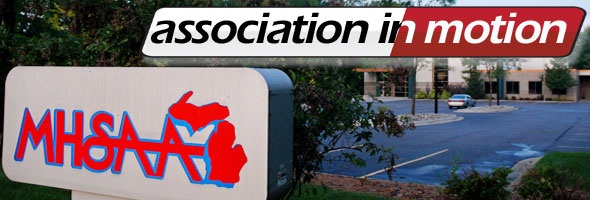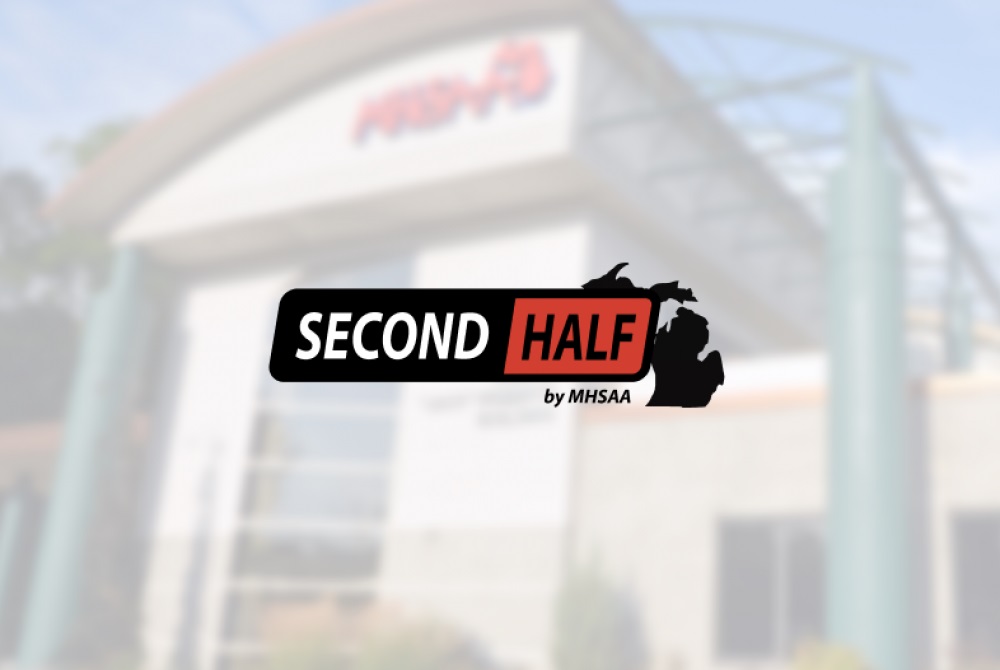
Fall Athletes: Prepare for Hot Weather
July 26, 2018
By Geoff Kimmerly
Second Half editor
As summer activities wind down with an eye toward the beginning of fall sports next month, the MHSAA advises that student-athletes need to prepare for training in the hot weather that traditionally accompanies the beginning of August and the first practices of the school year.
Each year, the MHSAA provides information to its member schools to help them prepare for hot weather practice and game conditions during the late summer and early fall. Football practice can begin at MHSAA schools August 6, followed by first practices for all other fall sports August 8.
The topic of heat-related injuries receives a lot of attention at this time of year, especially when deaths at the professional, collegiate and interscholastic levels of sport occur, and especially since they are preventable in most cases with the proper precautions.
“This month’s high temperatures across much of Michigan served as a reminder that we all must take a role in making sure our student-athletes are ready for hot weather as practices get underway,” said John E. “Jack” Roberts, executive director of the MHSAA. “At the start of every fall, we point out that with proper precautions and planning, heat illness is almost always preventable. It is imperative that we continue to emphasize this message and teach the best practices for staying safe both to our returning student-athletes and those taking part for the first time.”
Heat, hydration and acclimatization continue to be focuses of the MHSAA’s required preseason rules meetings for coaches and officials. The online presentations discuss the need for good hydration in sports, regardless of the activity or time of year, and informs both how to recognize the early signs of heat illness and the immediate steps to take to respond to those symptoms. The MHSAA requires all head varsity, varsity assistant and subvarsity coaches at the high school level to complete the rules and risk minimization meeting requirement.
The first days of formal practices in hot weather should be more for heat acclimatization than the conditioning of athletes, and practices in such conditions need planning to become longer and more strenuous over a gradual progression of time. Schools also must consider moving practices to different locations or different times of day, or change practice plans to include different activities depending on the conditions. Furthermore, football practice rules allow for only helmets to be worn during the first two days, only shoulder pads to be added on the third and fourth days, and full pads to not be worn until the fifth day of team practice.
Roberts also emphasized that student-athletes should make sure to hydrate all day long – beginning before practice, continuing during and also after practice is done. Water and properly-formulated sports drinks are the best choices for hydration, while energy drinks, high-carbohydrate fruit juices (greater than eight percent carb content), carbonated and caffeinated beverages are among those that should be avoided. The “Health & Safety” page of the MHSAA Website has a number of links to various publications and information including recommendations on proper hydration from the National Federation of State High School Associations (NFHS).
A number of member schools follow the MHSAA’s Model Policy for Managing Heat & Humidity, which while not mandated for member schools was adopted as a rule for MHSAA postseason competition in 2013. The plan directs schools to begin monitoring the heat index at the activity site once the air temperature reaches 80 degrees, and provides recommendations when the heat index reaches certain points, including ceasing activities when it rises above 104 degrees. (When the temperature is below 80 degrees, there is no combination of heat and humidity that will result in a need to curtail activity.)
The model heat & humidity policy is outlined in a number of places on the MHSAA Website, including as part of the publication Heat Ways, also available for download from the “Health & Safety” page.

MHSAA Survey Shows Continued Lower Rate of Schools Charging Participation Fees During 2021-22
By
Geoff Kimmerly
MHSAA.com senior editor
July 28, 2022
Although participation in high school sports rebounded significantly at Michigan High School Athletic Association schools during the 2021-22 school year, the percentage of member schools charging participation fees remained near its lowest of the last two decades after a major reduction during 2020-21 when fall and winter activities were affected by COVID-19.
Only 40 percent of MHSAA member schools charged participation fees during the 2021-22 school year, following 41 percent using them during 2020-21 – after 48 percent of member schools reported charging them during the 2019-20 school year, when athletics operated normally until the pandemic resulted in a shutdown that March. The dips into the low 40s were the lowest percentages of schools assessing fees since the 2006-07 school year.
The MHSAA participation fee survey has measured the prevalence of charging students to help fund interscholastic athletics annually since the 2003-04 school year. The percentage of member schools charging fees crossed 50 percent in 2010-11 and reached a high of 56.6 percent in 2013-14 before falling back to 50 percent or below during recent years.
Of the 690 schools (92 percent of membership) which responded to the 2021-22 survey, 279 assessed a participation fee, while 411 did not during the past school year. For the purposes of the survey, a participation fee was anything $20 or more regardless of what the school called the charge (registration fee, insurance fee, transportation fee, etc.).
Class A schools remained the largest group charging fees, with 57 percent of respondents doing so. Class B and Class C schools followed, with 39 and 34 percent charging fees, respectively, and 33 percent of Class D schools also charged for participation.
Among schools assessing fees, a standardized fee for each team on which a student-athlete participates – regardless of the number of teams – has shown for a number of years to be the most popular method, with that rate at 46 percent of schools with fees for 2021-22. Next were 32 percent of assessing schools charging a one-time standardized fee per student-athlete, followed by 14 percent assessing fees based on tiers of the number of sports a student-athlete plays (for example, charging a larger fee for the first team and less for additional sports).
The amounts of participation fees have remained relatively consistent over the last decade. For 2021-22, the median annual maximum fee per student was $150, and the median maximum fee per family was $300. The median fee assessed by schools that charge student-athletes once per year was $120, and the median fee for schools that assess per team on which a student-athlete plays was $75.
The survey for 2021-22 and surveys from previous years can be found on the MHSAA Website. Click for the full 2021-22 survey report.
As reported earlier this month, participation in MHSAA-sponsored sports rebounded 6.6 percent in 2021-22 from the previous school year.
The MHSAA is a private, not-for-profit corporation of voluntary membership by more than 1,400 public and private senior high schools and junior high/middle schools which exists to develop common rules for athletic eligibility and competition. No government funds or tax dollars support the MHSAA, which was the first such association nationally to not accept membership dues or tournament entry fees from schools. Member schools which enforce these rules are permitted to participate in MHSAA tournaments, which attract more than 1.4 million spectators each year.

